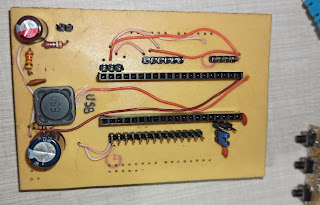Introduction: Polynomial addition lies at the heart of algebraic manipulation, forming the basis for solving equations, graphing functions, and understanding complex mathematical relationships. In this article, we'll delve into the fundamentals of polynomial addition, exploring its significance, basic rules, and practical applications.
What are Polynomials? Before diving into polynomial addition, it's essential to understand what polynomials are. A polynomial is an algebraic expression consisting of variables and coefficients, combined using addition, subtraction, multiplication, and non-negative integer exponents. They often represent functions, equations, or mathematical models in various fields like physics, engineering, and economics.
The Basics of Polynomial Addition: Polynomial addition involves combining like terms to simplify expressions or solve equations. When adding polynomials, it's crucial to ensure that similar terms are grouped together and then added or subtracted accordingly. For instance, when adding and , we group terms with the same exponent together: for the terms, for the terms, and constants separately. This process ensures clarity and accuracy in calculations.
The Rules of Polynomial Addition:
- Like Terms: Only terms with the same variables and exponents can be added or subtracted.
- Coefficients: When combining like terms, add or subtract their coefficients while keeping the variables and exponents unchanged.
- Constants: Always combine constants separately.
- Maintain Order: When adding or subtracting polynomials, maintain the order of terms to avoid errors.
- Zero Coefficients: If a term is missing in one polynomial, treat its coefficient as zero during addition.
Examples of Polynomial Addition: Let's consider a few examples to illustrate polynomial addition:
- Adding and yields .
- Combining and results in .
Applications of Polynomial Addition:
- Solving Equations: Polynomial addition is crucial for solving equations involving algebraic expressions.
- Graphing Functions: By adding or subtracting polynomials, one can graph functions to understand their behavior and characteristics.
- Curve Fitting: Polynomial addition plays a vital role in curve fitting, where data points are approximated using polynomial functions.
- Engineering and Physics: In engineering and physics, polynomial addition is used to model physical phenomena, analyze systems, and solve complex problems.
Conclusion: In summary, polynomial addition is a fundamental operation in algebra, enabling mathematicians, scientists, and engineers to manipulate expressions, solve equations, and analyze data effectively. By understanding its principles, rules, and applications, individuals can harness the power of polynomial addition to explore the depths of mathematics and its practical implications across various disciplines.

































